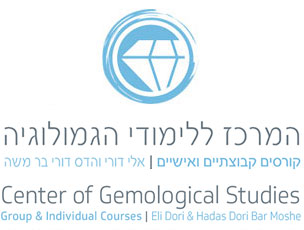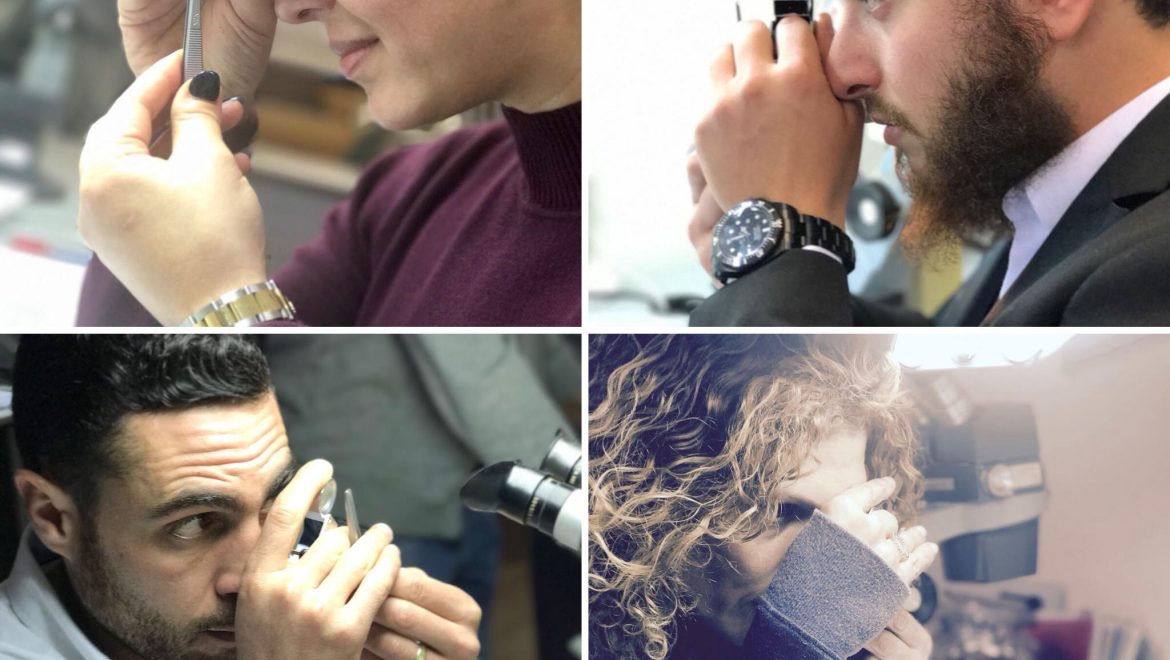Diamond substitutes – the differences between Zirconia and Diamond
There are two types of diamond substitutes, natural substitutes and synthetic substitutes.
Natural diamond substitutes include:
- White Spinel
- White Sapphire
- White Quartz.
Artificial diamond substitutes include:
- Synthetic White Spinel
- Synthetic White Sapphire
- Synthetic White Quartz
- Glass
- Cubic Zirconia – zro2
- Moissanite
- Synthetic Diamond -Laboratory Grown
- Y.A.G
- G.G.G.
Cubic Zirconia
The Cubic Zirconia (ZRO2) is considered to be one of the best substitutes for a diamond because it has more fire than a diamond (although it has less brilliance).
11 differences between a Zirconia and a Diamond:
- Specific Gravity
The Zirconia is heavier than a diamond – its specific gravity is 5.80; a diamond’s is 3.52.
As a result, perfect proportions for a 1.00 carat diamond are:
- Depth – 3.87
- Average Diameter – 6.40 – 6.50.
A Zirconia with this average diameter will weigh 1.80 carat. So, if there is a disproportion between the carat weight and the average diameter, a stone might be a Zirconia.
- Visual Appearance
When placed face-down in a “brifce,” a Zirconia will appear pale and transparent, whereas a diamond will look bright and not transparent. Also, Zirconia is often pale and cloudy.
- Reading Lines
A Zirconia placed face-down on a black line will reflect the line to the viewer.
On the other hand, the diamond will not reflect the line.
This test is not effective for shallow stones and for fancy shapes.
If the stone is set into jewelry and the culet is not covered, you can place a strongly colored paper underneath the jewelry. If the color of the paper is visible through the stone it is a Zirconia.
- Long and deep scratches
Because Zirconia is a softer material than diamond (hardness 8), long and deep scratches on the table and chips where the facets meet are often visible. This is rarely so in a diamond.
- Polish Lines
The Zirconia does not have an inherent structure to guide polish directions, and can therefore be polished in any direction. So, if you see polish lines that go in different directions in a stone, that stone must be a Zirconia.
- Girdle Surface
The Zirconia does not have a faceted girdle. It has a kind of a polished or rough girdle which looks gray, and usually bright.
If you see a piece of jewelry containing many small stones that have thick and equal girdles, they are probably Zirconias.
- Naturals, knots and Graining Lines
The Zirconia does not have graining lines, knots or naturals, although sometimes it has strong chips in the girdle area that look like naturals.
- Air Bubbles
Because of the artificial process used to create Zirconias, they contain hundreds of small air bubbles in the shape of clouds or straight lines. This will never happen in a diamond.
- Damage Test
If you scrub a stone with a pin or a glass paper and small pieces flake off, it is a Zirconia.
- Special Equipment
Special equipment can be used to measure the heat transparency of the stone. This equipment readily differentiates between diamonds and Zirconias.
- Roentgen Rays (X-rays)
Diamonds are transparent to roentgen rays; Zirconias are not.
A number of additional points regarding Zirconia:
- Clarity – In the old productions the Zirconias had many air bubbles. Today with the new production, they usually have high clarity grades.
- Color – the Zirconia is usually manufactured in D to J colors, as well as fancy colors. Zirconia colors change over time, and they are therefore not well-suited for use as Master Stones.
- Cut – The old Zirconia usually has a fair cut, with a thick girdle and fair symmetry. Today the cut is good. It is usually cut in round shape, but is sometimes cut in fancy shapes. However, fancy shapes are not well-suited to the light-breaking properties of Zirconia. Therefore, Zirconia cut in fancy shapes will have a poor appearance from the crown with milky areas on the sides.
- Carat Weight – The Zirconia is usually made from 0.1 Carat to 1.00 Carat.
- Trade – Zirconia are traded by their average diameter, except for large Zirconia which are traded by their weight.
Would you like to learn more about diamonds? You can approach the Center of Gemological Studies and register to the most prestige, affluent and respected gemology course in the Israeli Diamond Center.
Hadas Dori Bar Moshe also lectures about diamonds in her lecture: The Secrets of the Diamonds.


